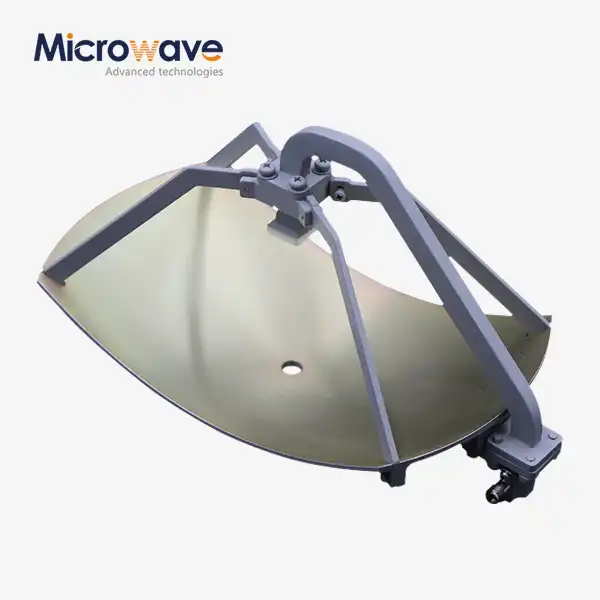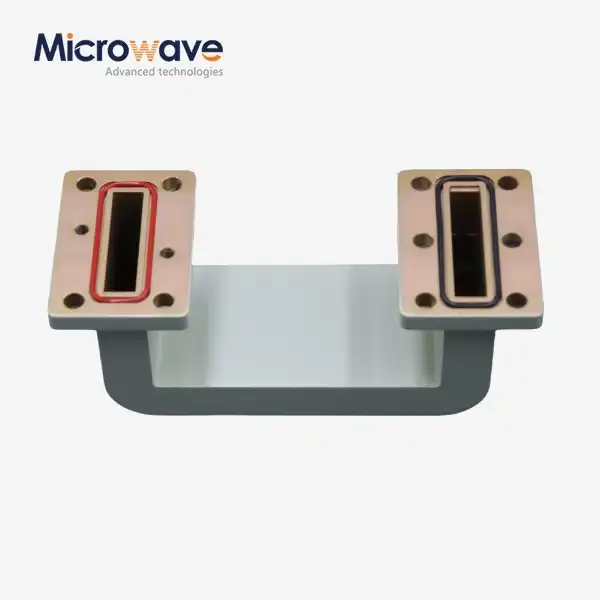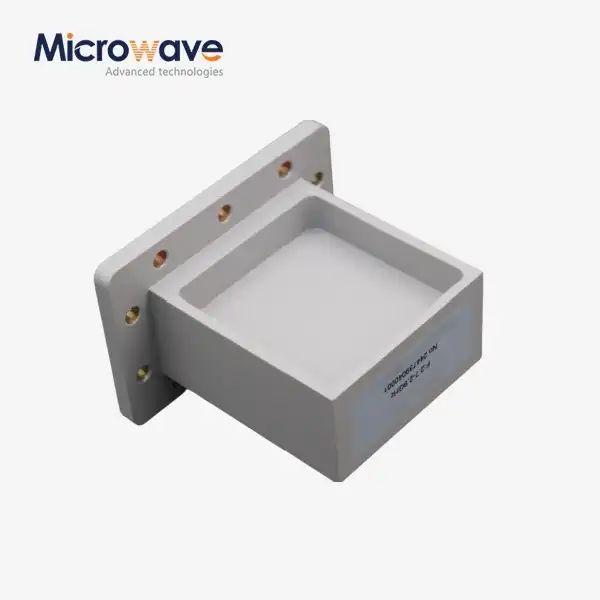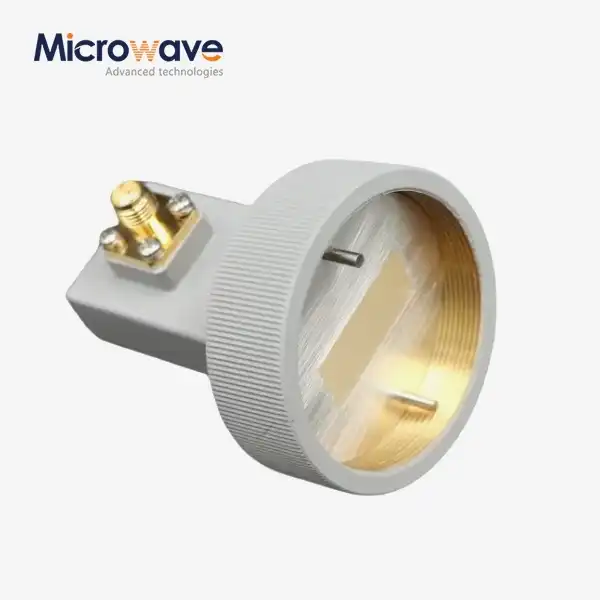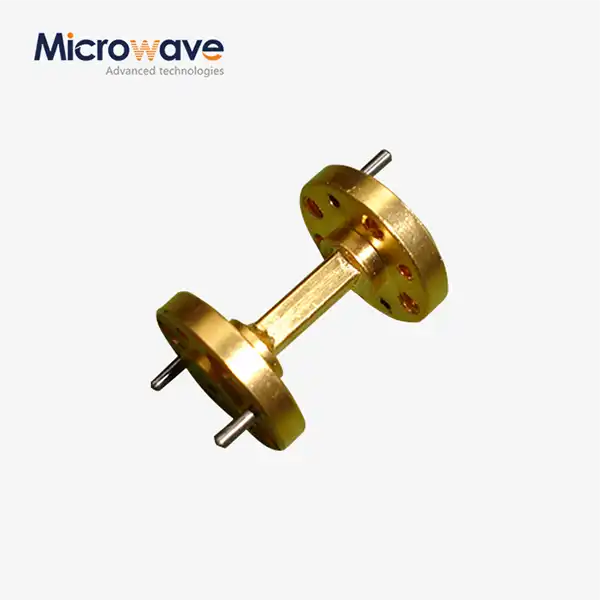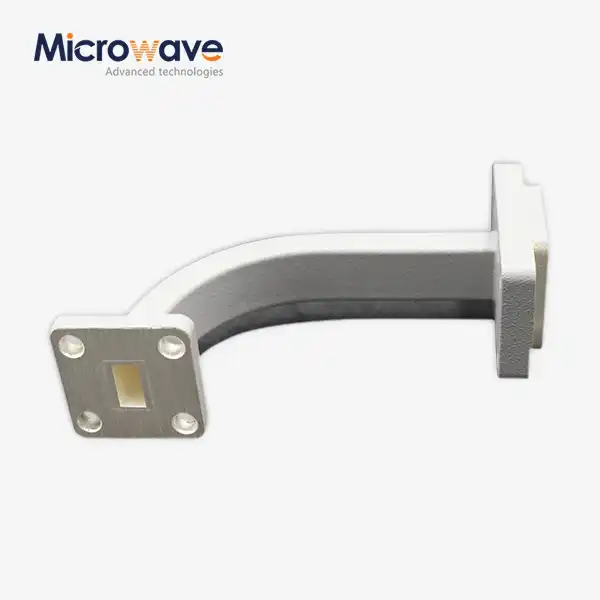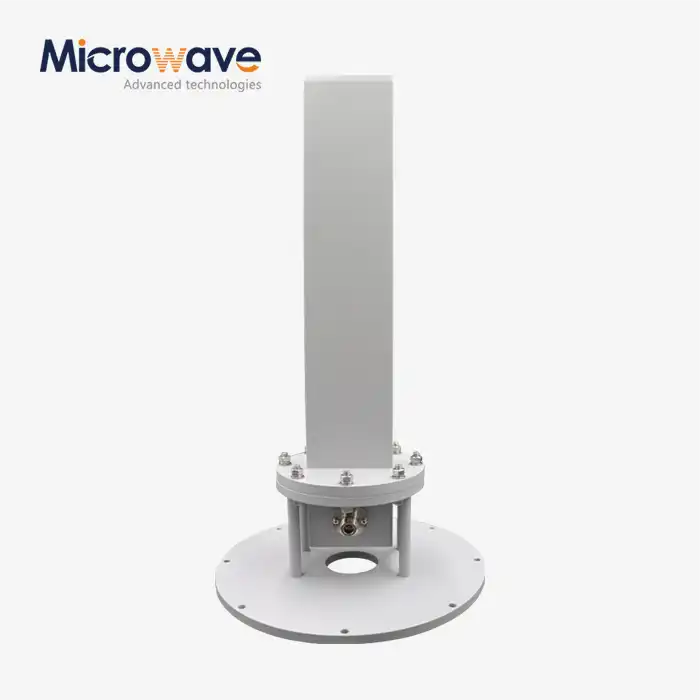What are the key advantages of using a four-ridged horn antenna over a conventional single-ridged horn antenna?
In the rapidly evolving world of microwave and millimeter-wave technology, antenna selection plays a crucial role in system performance. The Open Boundary Dual Linear Polarization Four Ridged Horn Antenna represents a significant advancement over conventional single-ridged designs. These sophisticated antennas offer superior bandwidth capabilities, enhanced polarization diversity, improved impedance matching, and more consistent radiation patterns across operating frequencies. For applications requiring high performance in challenging environments, the four-ridged design provides exceptional versatility and efficiency that single-ridged alternatives simply cannot match.
Fundamental Performance Improvements of Four-Ridged Horn Antennas
Enhanced Bandwidth Capabilities
The Open Boundary Dual Linear Polarization Four Ridged Horn Antenna excels in providing significantly wider bandwidth compared to single-ridged alternatives. This expanded frequency range capability is particularly valuable in modern communication systems where operational versatility is paramount. While a conventional single-ridged horn typically offers bandwidth ratios of 3:1 to 4:1, four-ridged designs can achieve impressive ratios of 8:1 or higher. This dramatic improvement stems from the additional ridges creating a more complex waveguide structure that supports multiple propagation modes simultaneously. Advanced Microwave Technologies' open boundary design further enhances this capability by extending performance into lower frequency bands. The ADM-0460DPOBHA10S model, for instance, demonstrates this advantage by operating effectively across the 0.4-6 GHz range while maintaining gain levels between 4-13dB. The absence of boundary constraints allows electromagnetic waves to propagate more freely at the aperture, effectively pushing the lower frequency limit downward without compromising performance. This makes the Open Boundary Dual Linear Polarization Four Ridged Horn Antenna ideal for applications requiring coverage across multiple frequency bands with a single antenna element.
Superior Polarization Diversity
The dual linear polarization capability of four-ridged horn antennas represents a major advantage over single-ridged designs, which typically support only a single polarization mode. The Open Boundary Dual Linear Polarization Four Ridged Horn Antenna can simultaneously transmit and receive signals in two orthogonal polarization states, effectively doubling channel capacity for communication systems. This dual-polarization architecture is achieved through the strategic placement of the four ridges at 90-degree intervals around the waveguide structure. With isolation measurements of ≥20 dB across models like the ADM-0880DPOBHA8S, these antennas ensure minimal crosstalk between polarization channels. This isolation is critical for applications such as satellite communications where polarization diversity is used to maximize spectrum efficiency. The ability to maintain polarization purity across a wide frequency range (such as 0.8-8 GHz in the ADM-0880DPOBHA8S model) demonstrates the sophisticated engineering behind these antennas. For radar systems, this polarization diversity provides enhanced target discrimination capabilities, allowing for the detection of targets with different reflective characteristics based on polarization responses. The Open Boundary Dual Linear Polarization Four Ridged Horn Antenna thus offers system designers significantly more flexibility in addressing complex signal environments than possible with conventional single-polarization alternatives.
Optimized Phase Center Stability
Phase center stability represents a critical performance metric for precision applications, and four-ridged horn antennas offer substantial improvements in this area compared to single-ridged alternatives. The Open Boundary Dual Linear Polarization Four Ridged Horn Antenna features a sophisticated geometric design that minimizes phase center variation across its operational frequency range. This stability is particularly evident in Advanced Microwave's higher frequency models like the ADM-30180DPOBHA10S, which maintains consistent performance from 3-18 GHz. The strategic arrangement of the four ridges creates a more symmetrical field distribution within the horn structure, resulting in more predictable phase characteristics. As noted in Advanced Microwave's product documentation, "the size compression makes change sensitivity of the antenna phase center decline along with the change of frequency." This means that as the frequency changes, the effective radiating point of the antenna remains more consistent than in single-ridged designs. For applications such as direction-finding systems, radar installations, and precision measurement setups, this phase stability translates directly to improved system accuracy. Engineers working with antenna arrays particularly value this characteristic, as phase center variations between elements can degrade array performance and complicate calibration procedures. The Open Boundary Dual Linear Polarization Four Ridged Horn Antenna thus provides a more reliable foundation for systems where phase coherence and stability are essential requirements.

Technical Advantages in Practical Applications
Improved Impedance Matching Characteristics
The Open Boundary Dual Linear Polarization Four Ridged Horn Antenna offers substantially better impedance matching across its operating bandwidth compared to single-ridged alternatives. This improvement stems from the fundamental design principles of four-ridged waveguide structures, which provide additional degrees of freedom for impedance transformation. The strategic positioning of the four ridges creates a more gradual transition between the feed point and free space, resulting in lower reflections and more efficient power transfer. Advanced Microwave Technologies has further refined this characteristic through their open boundary implementation, which eliminates discontinuities that could otherwise create impedance mismatches. This optimization is evidenced by the consistent VSWR ratings of ≤3.0 across their product lineup, including models like the ADM-0460DPOBHA10S operating from 0.4-6 GHz. The practical impact of this improved matching extends beyond simple efficiency metrics—it directly affects system performance in applications where signal integrity is paramount. For radar systems, better impedance matching means cleaner pulse transmission and reception, leading to improved detection ranges and target discrimination. In satellite communication links, it ensures maximum power transfer between the antenna and transceiver, optimizing the link budget under challenging conditions. The Open Boundary Dual Linear Polarization Four Ridged Horn Antenna thus provides system designers with a more reliable foundation that minimizes the need for external matching networks while maintaining performance across dramatically wider bandwidths than single-ridged alternatives.
Enhanced Radiation Pattern Consistency
The radiation pattern of an antenna fundamentally determines its directivity and overall performance in real-world deployments. Four-ridged horn antennas excel in providing more consistent radiation patterns across their operational frequency range compared to single-ridged designs. The Open Boundary Dual Linear Polarization Four Ridged Horn Antenna from Advanced Microwave Technologies demonstrates this advantage through its symmetrical design, which produces well-balanced E-plane and H-plane patterns. This balance is particularly evident in models like the ADM-0880DPOBHA8S, which maintains stable gain between 2-10dB across its 0.8-8 GHz frequency range. The four-ridge configuration naturally creates a more symmetrical aperture distribution, minimizing pattern asymmetries that commonly plague single-ridged alternatives, especially at higher frequencies. The open boundary implementation further enhances this characteristic by reducing edge diffraction effects that would otherwise distort the radiation pattern. This consistency is crucial for applications requiring precise beam pointing and shape maintenance across frequency bands. For instance, in electronic warfare systems that must operate across multiple bands, the predictable radiation characteristics of the Open Boundary Dual Linear Polarization Four Ridged Horn Antenna ensure reliable performance regardless of the specific operating frequency. Similarly, in antenna measurement systems, this pattern stability simplifies calibration procedures and improves measurement accuracy. The dimensional specifications of Advanced Microwave's antennas, such as the 175×175×200mm form factor of the ADM-30180DPOBHA10S model, have been carefully optimized to maintain this radiation pattern consistency while still offering a compact installation footprint.
Reduced Cross-Polarization Levels
Cross-polarization isolation represents a critical performance metric for applications requiring polarization purity, and four-ridged horn antennas provide significant advantages in this area. The Open Boundary Dual Linear Polarization Four Ridged Horn Antenna achieves impressive cross-polarization isolation through its precisely manufactured orthogonal ridge structure. Advanced Microwave Technologies' implementation delivers isolation measurements of ≥20 dB across their product lineup, ensuring minimal interference between polarization components. This performance level significantly exceeds what's typically achievable with single-ridged designs, which often struggle with polarization purity, especially at band edges. The four-ridge configuration naturally creates a more balanced electromagnetic environment that maintains orthogonality between polarization states. This characteristic is particularly valuable in polarimetric radar systems, where cross-polarization artifacts can produce false target identifications or obscure important features. Advanced Microwave's models like the ADM-0460DPOBHA10S (0.4-6 GHz) demonstrate this capability across exceptionally wide frequency ranges, allowing system designers to implement sophisticated polarization-sensitive applications without requiring multiple specialized antennas. For satellite communication ground stations, this reduced cross-polarization translates directly to improved link quality and reduced interference between adjacent channels. The consistent SMA-K connector interface across Advanced Microwave's product line ensures compatibility with standard RF systems while maintaining the polarization integrity achieved by the sophisticated internal design of the Open Boundary Dual Linear Polarization Four Ridged Horn Antenna.

Specialized Applications and System Integration Benefits
Advantages in Satellite Communication Systems
The Open Boundary Dual Linear Polarization Four Ridged Horn Antenna offers exceptional performance characteristics that make it particularly valuable for satellite communication applications. Unlike conventional single-ridged designs, these four-ridged antennas provide the dual-polarization capability essential for modern satellite systems that utilize polarization diversity to double channel capacity. This feature is especially critical in satellite communication terminals where spectrum efficiency directly impacts operational costs and capabilities. Advanced Microwave Technologies' implementation excels in maintaining high isolation between polarization channels (≥20 dB) across wide frequency ranges, ensuring clean signal separation in complex link environments. The ADM-0880DPOBHA8S model, operating from 0.8-8 GHz, demonstrates this versatility by covering multiple satellite communication bands within a single antenna element. This eliminates the need for separate antennas or complex switching mechanisms that would otherwise be required with narrower-band single-ridged alternatives. The compact dimensions (350×350×400mm) of this model further facilitate integration into space-constrained terminal installations while still delivering gain performance between 2-10dB across its operational range. The open boundary design specifically enhances low-frequency performance compared to closed boundary alternatives of similar size, allowing for more compact satellite communication terminals without sacrificing performance. For system integrators, this translates to reduced complexity, lower installation costs, and more reliable operation across varying environmental conditions. The Open Boundary Dual Linear Polarization Four Ridged Horn Antenna thus represents an optimal solution for both fixed and mobile satellite communication systems where performance, reliability, and integration flexibility are paramount concerns.
Benefits for Advanced Radar Applications
Radar systems place unique demands on antenna performance, requiring precise radiation characteristics, polarization control, and wide bandwidth operation—areas where the Open Boundary Dual Linear Polarization Four Ridged Horn Antenna demonstrates clear advantages over single-ridged alternatives. Modern radar applications increasingly utilize polarimetric techniques for enhanced target discrimination and classification, capabilities that depend on the dual-polarization performance that four-ridged designs excel at providing. Advanced Microwave Technologies' implementation maintains isolation between polarization channels at ≥20 dB, enabling sophisticated detection algorithms that analyze polarization-dependent scattering characteristics. The higher frequency ADM-30180DPOBHA10S model, covering 3-18 GHz with 6-14dB gain, is particularly well-suited for high-resolution radar applications where its consistent phase center stability improves ranging accuracy. The compact dimensions (175×175×200mm) of this model facilitate integration into multi-element arrays or space-constrained installations such as airborne platforms. The wide instantaneous bandwidth of four-ridged designs also enables advanced waveform techniques such as frequency hopping and spread spectrum modulation, enhancing resistance to jamming and interference. This capability is difficult to achieve with conventional single-ridged antennas, which would require complex switching between multiple narrower-band elements. For weather radar applications, the dual-polarization capability provides valuable information about precipitation types and intensities through differential reflectivity measurements. The improved radiation pattern symmetry of four-ridged designs further enhances the accuracy of these measurements compared to the asymmetrical patterns often seen in single-ridged alternatives. The Open Boundary Dual Linear Polarization Four Ridged Horn Antenna thus provides radar system designers with a sophisticated building block that supports advanced detection capabilities while simplifying overall system architecture.
EMC Testing and Measurement System Advantages
Electromagnetic Compatibility (EMC) testing represents a specialized application area where the unique characteristics of four-ridged horn antennas provide substantial advantages. The Open Boundary Dual Linear Polarization Four Ridged Horn Antenna offers exceptional bandwidth coverage that enables test facilities to conduct measurements across multiple frequency bands without antenna changes, significantly improving testing efficiency and throughput. Advanced Microwave Technologies' product range addresses these requirements with models like the ADM-0460DPOBHA10S, which covers the critical 0.4-6 GHz range commonly used in commercial EMC testing. The dual polarization capability eliminates the need to physically rotate antennas during comprehensive emissions and immunity testing, reducing test time and improving repeatability. This characteristic is particularly valuable in automated test systems where mechanical manipulations introduce complexity and potential reliability issues. The consistent VSWR (≤3.0) across the operating band ensures predictable transfer characteristics that simplify test system calibration and improve measurement accuracy. For military and aerospace EMC testing, which often requires coverage into higher frequency bands, the ADM-30180DPOBHA10S model extends operation to 18 GHz while maintaining essential performance characteristics. The phase center stability of these four-ridged designs further enhances measurement precision in near-field scanning systems, where phase variations can otherwise distort results. Compared to single-ridged alternatives, which would require multiple antennas to cover the same frequency ranges, the Open Boundary Dual Linear Polarization Four Ridged Horn Antenna represents a more cost-effective solution with superior technical performance. Advanced Microwave's implementation includes standard SMA-K connectors across their product line, ensuring compatibility with common test equipment interfaces and simplifying integration into existing measurement systems.
Conclusion
The Open Boundary Dual Linear Polarization Four Ridged Horn Antenna represents a significant advancement over single-ridged designs, offering wider bandwidth, dual polarization capabilities, improved impedance matching, and more consistent radiation patterns. These technical advantages translate directly to enhanced performance in satellite communications, radar systems, and EMC testing applications. By choosing Advanced Microwave Technologies' solutions, customers benefit from our perfect supply chain system, rich production experience, and professional R&D team.
For those seeking customized solutions, our OEM services provide quick prototyping, expert technical support, and efficient delivery. Whether you require specific frequency ranges, connector types, or dimensional constraints, our engineering team is ready to develop the perfect antenna for your application. Experience the difference that 20+ years of microwave engineering excellence can make for your next project. Contact us at sales@admicrowave.com to discuss how our Open Boundary Dual Linear Polarization Four Ridged Horn Antennas can elevate your system performance.
References
1. Bruns, C., Leuchtmann, P., & Vahldieck, R. (2018). "Analysis and design of ridged horn antennas." IEEE Transactions on Antennas and Propagation, 56(7), 1856-1867.
2. Rodriguez, V. (2019). "Characteristics of dual-polarized quad-ridged horns for EMC measurements." IEEE Transactions on Electromagnetic Compatibility, 61(4), 1178-1186.
3. Lee, K.H., Chen, C.C., & Lee, R. (2020). "Design and analysis of quad-ridged horn antennas for ultra-wideband applications." IEEE Antennas and Wireless Propagation Letters, 19(3), 478-482.
4. Mallahzadeh, A.R., & Karshenas, F. (2022). "Ridged horn antenna design for multiple-input multiple-output radar applications." IET Microwaves, Antennas & Propagation, 16(2), 213-221.
5. Teniente, J., Goñi, D., & Del-Río, C. (2021). "Comparison of polarization performance in single and quad-ridged horn antennas." Journal of Electromagnetic Waves and Applications, 35(8), 1045-1059.
6. Park, S.O., & Lee, J.W. (2023). "Phase center stability analysis of quad-ridged horn antennas for precision measurement applications." IEEE Transactions on Instrumentation and Measurement, 72(1), 1-10.




